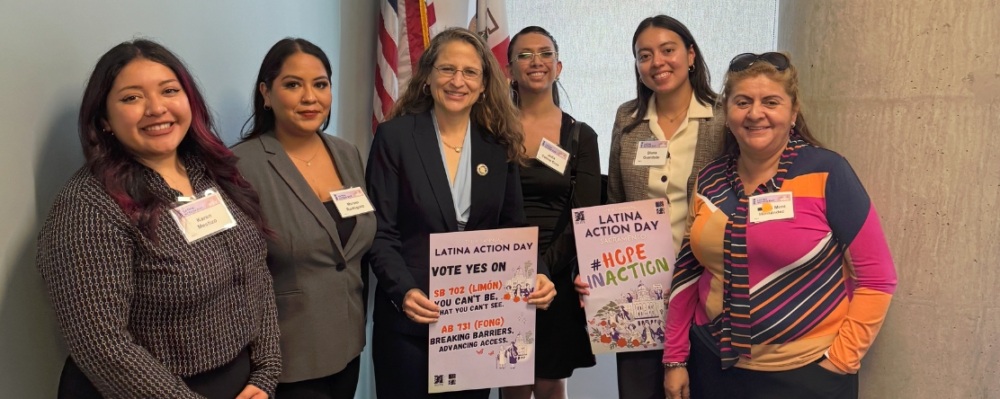
Advancing Health Equity: Case Studies of Health Equity Practice in Four Award-Winning California Health Departments
- Heather Gehlert
-
Focus Areas
Healthy Communities -
Programs
Berkeley Media Studies Group

 Call any local health department in the United States and, chances are, you won’t have much trouble finding information on the health problems its surrounding communities face. You might learn that a county’s populations of color have higher rates of asthma than white community members, or that its low-income adults are more likely to experience a heart attack. Or you might discover that the region experiences excellent health overall but still struggles with wide differences in life expectancy from one neighborhood to the next.
Call any local health department in the United States and, chances are, you won’t have much trouble finding information on the health problems its surrounding communities face. You might learn that a county’s populations of color have higher rates of asthma than white community members, or that its low-income adults are more likely to experience a heart attack. Or you might discover that the region experiences excellent health overall but still struggles with wide differences in life expectancy from one neighborhood to the next.
That’s because health departments are increasingly focused on understanding health inequities—unjust differences in health outcomes and longevity that can’t be explained by genetics or individual behavior—and how to prevent them. Going beyond public health’s traditional purview of infectious disease control and clinical services, many health departments are now exploring how social, economic and political inequalities, all of which are rooted in power differences, are causing some groups to live sicker and die younger than others. These inequalities show up in indicators like education and income levels, rates of violence, and policies and practices that create advantages for some populations and disadvantages for others, based, for example, on race, gender or sexuality.
Health departments’ growing emphasis on health inequities echoes the United States’ early days of public health, which centered around social reform efforts, such as improving housing conditions, reducing pollution from factories, and eliminating child labor. Health equity is now so widely regarded as important that Healthy People 2020, a federal agenda for improving the nation’s health, has revised its overarching goals to include achieving health equity.
Yet, at the same time that health equity is gaining traction, state and local health departments across the country are facing budget cuts, leaving them hard-pressed to maintain even basic programs and services, let alone to tackle health inequities and their root causes. California in particular has suffered a significant loss of public health resources in recent years. In 2012, the state received only about $18 per capita in federal public health funds from the Centers for Disease Control and Prevention and $23 per capita in grants from the federal Health Resources and Services Administration. California also lacks a dedicated funding stream to address health inequities; each health department individually has to find resources to create environments that support health.
In spite of these challenges, health departments across California are getting creative and finding ways to advance health equity anyway. In fact, health departments in Shasta, Sonoma, Los Angeles and Alameda counties are making such great strides that The California Endowment (TCE) has recently honored them for their work. At a December 2014 gala in Sacramento, TCE presented the four groups with awards as part of a larger effort to recognize and further progress among local health departments—and the organizations and regional coalitions they work with—that are engaging in innovative work to address health inequities. TCE supported a planning committee, which came together both to design the awards and to develop a process for sharing insights from local health departments throughout California. The goal is to help set a new standard of health equity practice among health departments by showcasing effective initiatives that can serve as examples for others to follow, as well as by providing much-needed funds to bolster promising approaches. Three awards came with a companion grant of $25,000, and one health department —Alameda—took home top honors: the Arnold X. Perkins Award for Outstanding Health Equity Practice and a grand prize of $100,000.
The following case studies explore what the award-winning health departments are up to—their successes, challenges, vision for the future, and lessons learned in their efforts to ensure health equity.
This introduction was excerpted from the case studies full report, available for download here.
Or, download the individual case studies:
- Shasta County Public Health: Health equity award winner for a small county practice
- Sonoma County Department of Health Services: Health equity award winner for a medium county practice
- Los Angeles County Department of Public Health: Health equity award winner for a large county practice
- Alameda County Public Health Department: Grand prize winner for outstanding health equity practice
Originally published by Berkeley Media Studies Group
Work With Us
You change the world. We do the rest. Explore fiscal sponsorship at PHI.
Support Us
Together, we can accelerate our response to public health’s most critical issues.
Find Employment
Begin your career at the Public Health Institute.


